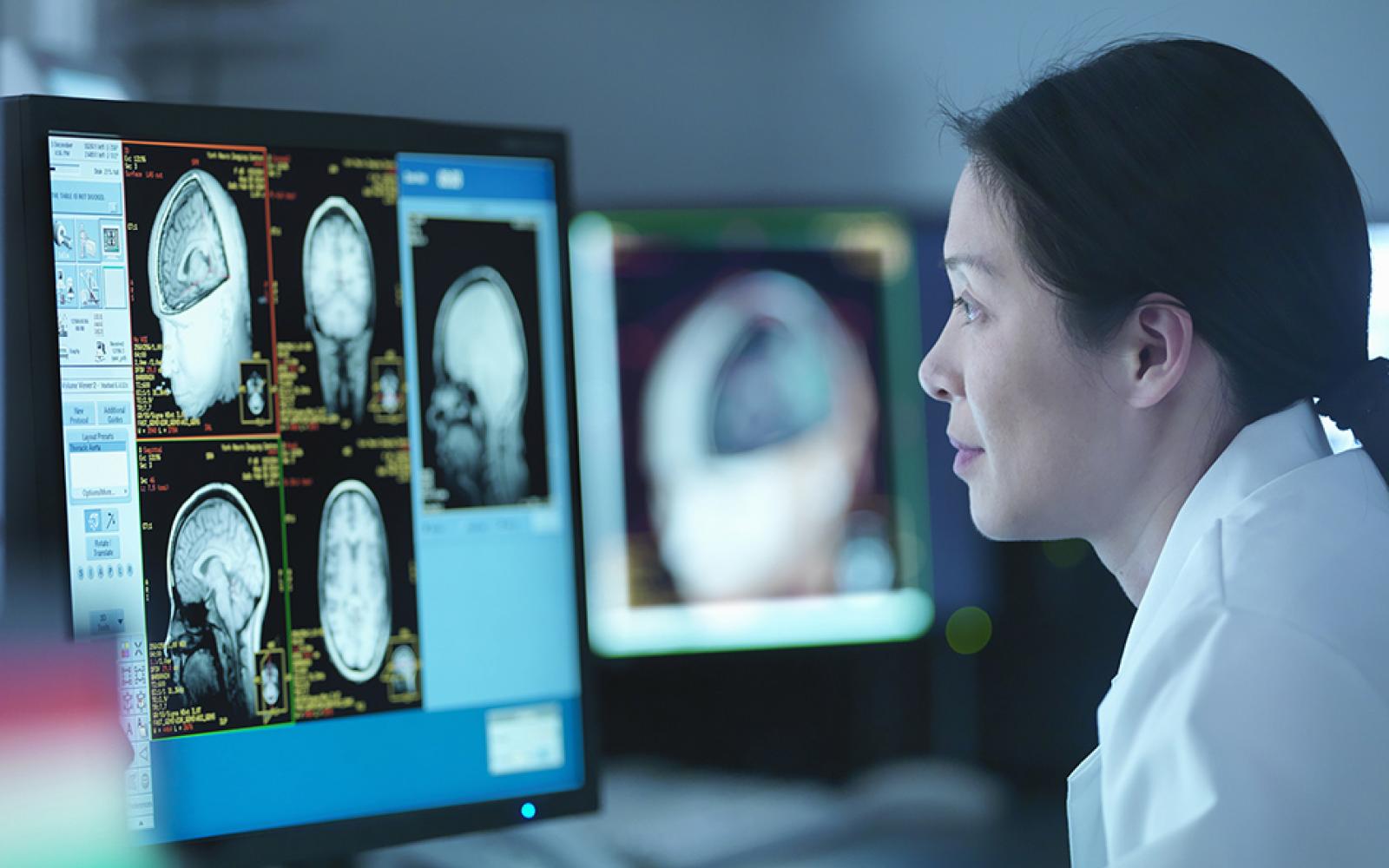
Anaplastic astrocytoma (grade III)
Anaplastic astrocytoma is a rare, malignant brain tumor that arises from astrocytes, the supportive cells in the nervous system.
Normally, astrocytes are responsible for a variety of roles, including providing nutrients to neurons, maintaining the blood-brain barrier, and modulating neurotransmission (how neurons communicate with each other).
Anaplastic astrocytomas often develop in the cerebral hemispheres of the brain, but may occur in almost any area of the central nervous system.
Anaplastic astrocytomas are a specific type of astrocytoma, and also belong to the broader category of gliomas – tumors that arise from glial cells. This is because astrocytes are a type of glial cell. For this reason, anaplastic astrocytomas (grade III) may also be called a “grade III glioma” or “high-grade glioma.”
Symptoms of anaplastic astrocytoma can result from an increase of pressure in the brain. This occurs as the tumor grows larger and takes up space, compressing healthy brain tissue within the fixed volume of the skull. Tumors can also grow large enough to block the normal flow of cerebrospinal fluid in the brain, which can also cause a buildup of pressure. Symptoms related to increased intracranial pressure include the following:
- Headaches
- Nausea
- Vomiting
More specific symptoms depend on the location of tumor, and the functions affected. For example, anaplastic astrocytomas that occur near the motor cortex (the part of the brain involved in body movement) may affect a patient’s ability to move, causing symptoms like weakness on one side of the body. Tumors near the language regions of the brain may cause problems with speech.
Anaplastic astrocytomas are relatively rare, accounting for about 1-2% of all primary brain tumors.1 In 2017, an estimated 1,570 new cases were diagnosed in the United States.1 Anaplastic astrocytoma is most common in adults, but can also occur in children.
Anaplastic astrocytomas can be further classified into more specific subtypes based on genetic characteristics. Specifically, anaplastic astrocytomas can have abnormal genetic signatures, including mutations in the IDH1 or IDH2 genes. The presence of these genetic differences can affect prognosis and treatment, and are classified accordingly:
- Anaplastic astrocytoma, IDH-mutant (if a mutation in either IDH1 or IDH2 is detected)
- Anaplastic astrocytoma, IDH-wildtype (if no IDH mutations are detected)
- Anaplastic astrocytoma, Not otherwise specified (if the tumor has not been tested)
Patients with anaplastic astrocytoma are usually first treated with surgery. The primary objective is to remove as much of the tumor as possible, while protecting critical brain function – this is called “maximal safe resection”. Especially since anaplastic astrocytomas can occur in near areas of the brain that control body movement, sensation, language, or vision, special measures may be taken to protect these functions. For example, awake surgery with brain mapping is commonly used when tumors are located in the brain regions that control language or movement. This technique allows surgeons to safely identify and preserve critical brain regions.
Because anaplastic astrocytomas tend to spread into neighboring healthy tissue, it can be difficult to fully remove all malignant cells. Radiation may be suggested to treat known (or possible) residual tumor cells. Certain radiotherapy techniques like Gamma Knife and IMRT offer the ability to specifically target remaining tumor cells while reducing radiation exposure to healthy tissue. Chemotherapy may also be suggested to continue treatment after surgery.
A personalized treatment plan will consider a variety factors, including the tumor’s size, location, and extent of surgical removal, among others.
Neurocognitive rehabilitation is also available through our Neurocognitive Care Services. Our multi-disciplinary team will assess each patient's needs, and devise an individualized plan to improve language, motor, or cognitive impairments caused by the brain tumor.
Anaplastic astrocytomas are a serious condition that will be treated by a multidisciplinary team consisting of neurosurgeons, neuro-oncologists, and radiation oncologists. How well a patient with anaplastic astrocytoma responds to treatment depends on a variety of factors, including whether the tumor can be fully removed. Typically, complete surgical removal of the tumor offers better outcomes.
Anaplastic astrocytoma (grade III) are likely to progress to glioblastoma (grade IV), so patients are regularly monitored for both tumor recurrence and progression to a higher grade tumor, with additional therapies recommended as needed.
The primary goal of treatment is to not only prolong survival for patients, but also to increase a patient’s quality of life, by addressing neurological symptoms and preserving cognitive function.
Finding information about prognoses and survival rates is a personal decision. The current statistics are only summary data, and don’t necessarily reflect results from new or experimental therapies. These data do not determine how individual patients might respond to their treatment – everyone is different. That said, some people may choose to look for this information, which can be found in the most recent CBTRUS Statistical Report, in Tables 21-25.1
- Ostrom, Q.T., et al., CBTRUS Statistical Report: Primary brain and other central nervous system tumors diagnosed in the United States in 2010-2014. Neuro Oncol, 2017. 19(suppl_5): p. v1-v88.
Surgical Specialists
This content was reviewed by UCSF Neuro-Oncology Fellow, Sarah Lapointe MD.





